Smartplantedaquarium.com participates in affiliate marketing programs. We may earn commissions on purchases made through our affiliate links. This doesn't affect our content or recommendations and we only recommend products we would put in our own tanks.
Cryptocoryne may sound like a crypto currency but it’s actually one of the most gorgeous and readily-available aquatic plant species for freshwater aquariums. Cryptocorynes, also known as “Crypts”, are a versatile aquarium plant that range in colors such as green, orange, brown. Originating from the winding jungle streams of Sri-Lanka, Vietnam, Malaysia, and Indonesia, these plants are sure to replicate a tropical playhouse for your aquarium inhabitants.
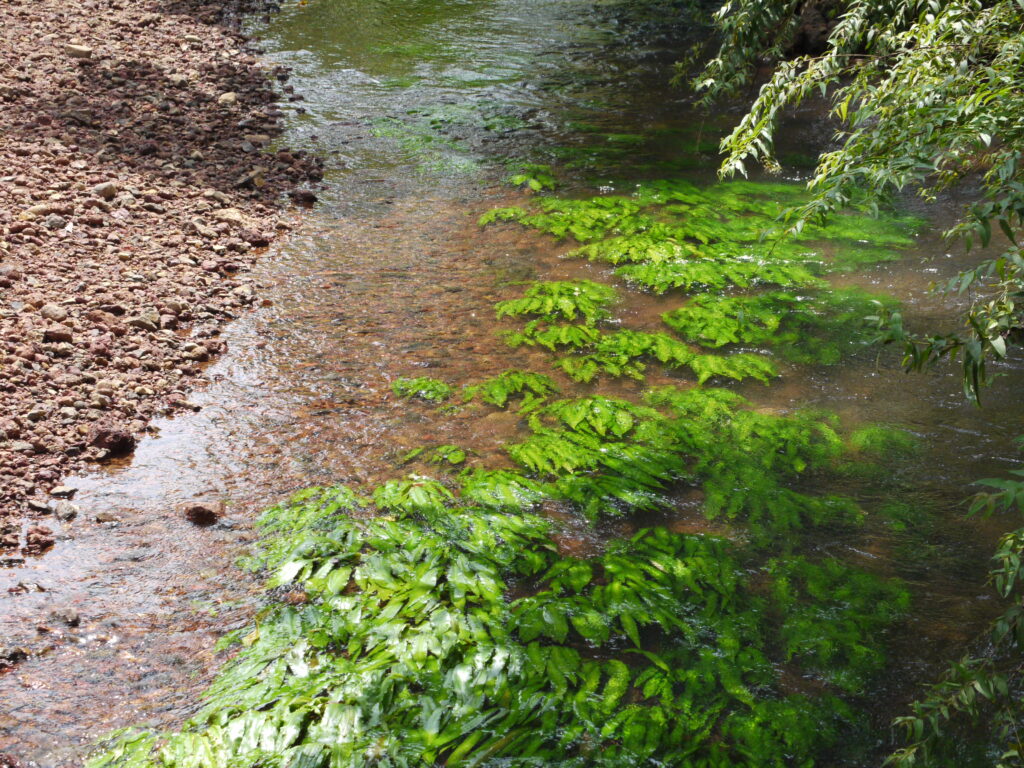
It’s believed that there are are over 60 species of crypts- many of which are still left undiscovered. However, in this guide we will be referring to the more common aquatic cryptocorynes which aquarists have come to love. Cryptocoryne in Greek means ‘hidden club ‘ which is fitting due to it being part of the Araceae family which have a club-like inflorescence hidden behind a petal.
In this guide we will investigate how to plant, propagate, and take care of your cryptocoryne and it’s sister species. We’ll also introduce you to some of the rarest cyrptocorynes aquarists grow in their tanks and where you can find them. Let’s dive into the world of cryptocorynes!
Contents
Overview of Cryptocoryne Aquarium Plants
With its unique leaf structure and contrasting colors, the cryptocoryne has deservedly earned its place as a staple tank plant among freshwater aquarium enthusiasts. Whether you are a beginner or an experienced hobbyist, this tropical wonder will certainly be an asset to your underwater world. However, crypts are not the easiest plants to grow, they require stable water parameters and a hearty stream of nutrients to thrive.
| Attribute | Description |
| Scientific Name | Cryptocoryne |
| Common Name | Crypts / Water Trumpet |
| Origin | Southeast Asia |
| Difficulty Level | Easy |
| Light Requirements | Low light, preferably shaded |
| Water Conditions | 5-8 ph |
| Best Temperature | 15ºC – 29ºC |
| Substrate | Aquarium Soil |
| Position in Tank | Foreground to midground |
| Growth Rate | Slow |
| Maximum Size | 2 inches (6 cm) – 20 inches (50 cm) |
| Compatible Plants | Vallisneria, Red Ludwigia, Amazon Swords |
| Ideal Tank Mates | Barbs, Danios, Discus fish, Gouramis, Killifish, Rainbowfish |
| Feeding and Nutrients | Carbon, nitrogen and phosphorus, and CO2 (if available) |
| Maintenance and Care | Steady water conditions, minor trimming |
| Propagation | Root Cuttings |
Appearance
Cryptocoryne appearances can swing wildly between species. Below we’ll identify the appearance aspects of the four most common cryptocoryne species in the aquarium hobby. Let’s take a dive into the details.
Cryptocoryne wendtii
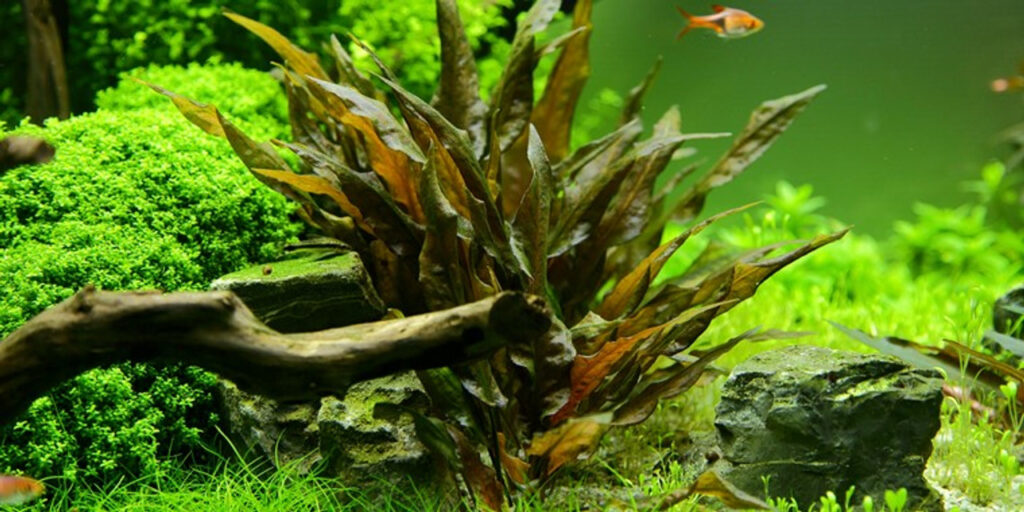
C. wendtii is one of the most commonly cultivated cryptocoryne in the aquarium industry. You’ll likely have passed by this lovely specimen in your local pet shop. The C. wendtii is a slow grower and lower maitenance crypt which will add life into your tank’s mid and background sectors.
Leaves: C. wendtii produces amazing green, brown, red and burgundy leaves that will inject contrast into your aquascape. They also have a mesmerizing wrinkly texture that will add creativity into your tank.
Size: Expect this species to grow slowly and reach sizes of 4 – 8 inches (10 – 20cm).
Roots: The C. wedntii is a shoot grower and will spread it’s robust root structure around your substrate. It’s one of the more forgiving cryptocorynes and will grow slowly with low maintenance.
Stem: You will find a thinner stem on this species. It’s thin diameter allows it to wave in the flow of the stream of it’s natural habitat. Due to this, the C. wendtii will spread out in your tank.
Inflorescence: The C. wendtii will eventually flower, but you probably don’t want to smell it! It’s flower is similar to a vertical trumpet and some say it smells like rotting meat.
Cryptocoryne walkeri
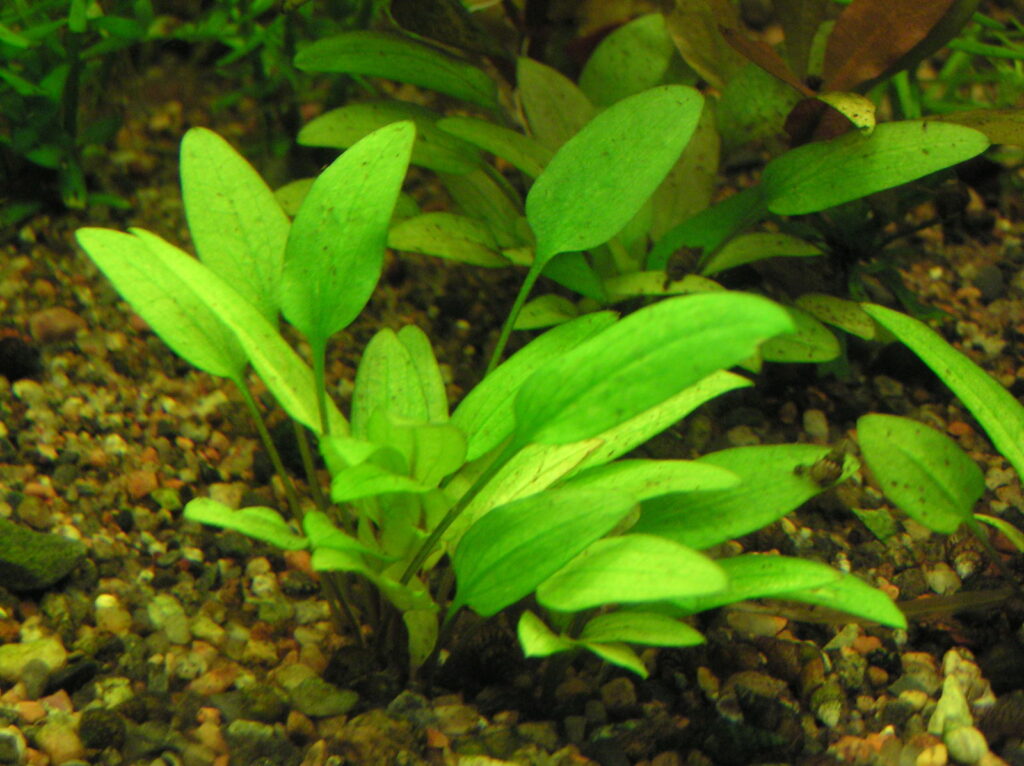
C. walkeri aka Walker’s Water Trumpet, is a beginner friendly crypt from the streams of Sri Lanka. It’s color ranges from vibrant green to deep red, purple, and brown adding a splash of color to your aquascape. While similar to the C. lutea, this crypt will only grow half it’s size.
Leaves: The leaves on Walker’s Water Trumpet are broad and spade-like. They range in multiple colors making it an ideal contrast plant.
Size: The C. Walkeri grows at a medium pace and will reach an average size of 4 – 6 inches. (10 – 15cm).
Roots: C. Walkeri sends off a series of runners underneath your substrate. These will propagate into new crypts if your tank conditions are right.
Stem: The stems on this plant are strong and grow extremely straight. Like their leaves, they can vary in color as well.
Inflorescence: The C. Walkeri has a spadix flower cluster sheathed in a spathe which resembles a Laceleaf or Arumlily.
Cryptocoryne spiralis
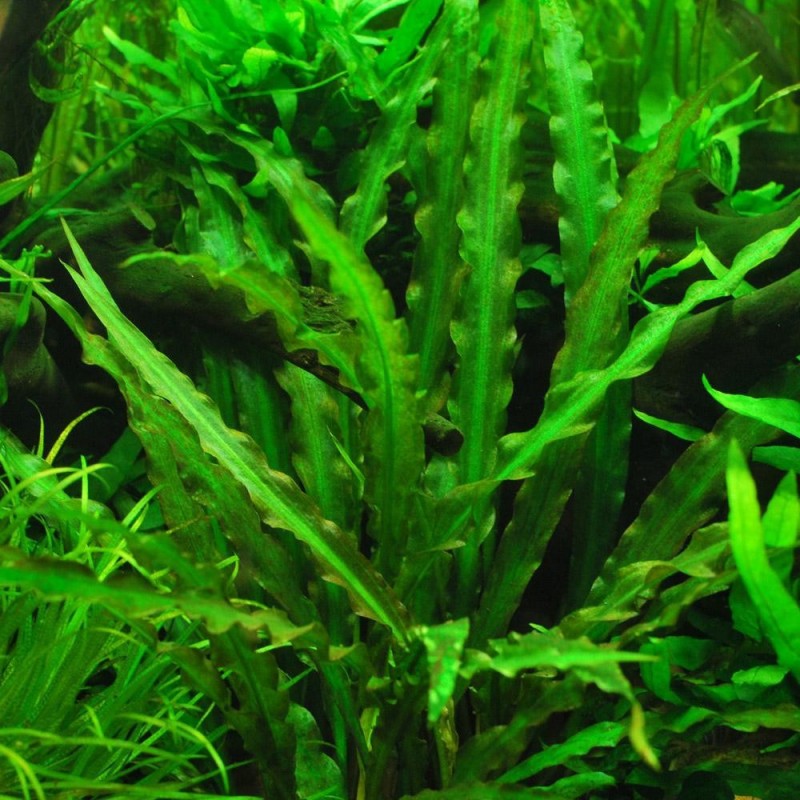
Cryptocoryne spiralis is like the crazy cousin of the crypt family that everyone loves. As an excellent background to mid-ground plant, the spiralis has unique ‘Java Fern‘ appearance which will add depth and variety to your tank.
Leaves: Expect long, jagged, and crinkly leaf structure that can grow to lengths of 12 – 16 inches (30 – 45 cm). These leaves are vibrant green and will be sure to give a jungle-like appearance in your tank.
Size: Cryptocoryne Spiralis is a mid to large size cryptocoryne that can grow as large as 12 inches (30cm+). Due to it’s large size, it makes an excellent background plant. Please note, you may have to trim this if your tank is small.
Roots: The spiralis’ roots are not picky. They will take hold in almost any substrate as long as their submerged. Be sure to add some root tabs for nutrients to boost their growth when you first plant them.
Stem: The stem on this species is thick and short. It morphs into the leaf quickly and branches outward making it cover a lot of area in your tank. It’s color can range from red to dark green.
Inflorescence: The C. spiralis can grows a distinctive flower that curls clockwise.
Cryptocoryne lutea
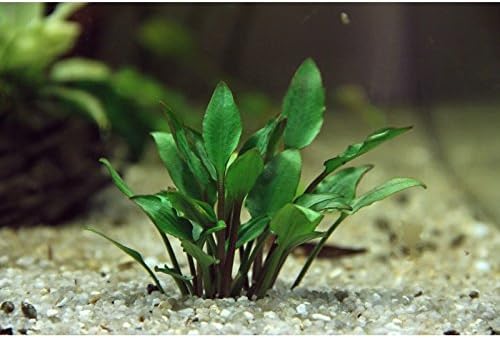
The Cryptocoryne lutea is favorite among aquarists due to it’s persistence to grow in any water conditions, it’s modest appearance, and unassuming natural features. Furthermore, it’s growth rate and large full-growth size make it a plant which you will only have to buy once if taken care of.
Leaves: Short and broad leaves attached by a lengthy stem. Leaves are a bright forest green with a red to burgundy stem that anchors them into the substrate.
Size: Cryptocoryne Lutea is a mid-size cryptocoryne that can grow as large as 6 – 8 inches. (15 – 20 cm)
Roots: This crypt has a robust root system that will grow runners throughout your substrate.
Stem: The stem on this crypt grows firmly upward compared to it’s sister species. Their growth is slow and they stay relatively small so you won’t have to trim too much.
Inflorescence: In it’s natural habitat the Cryptocoryne can create a flower in the form of a spadix which is hidden behind a singular encompassing petal called a spathe.
Size and Growth Rate
The size and growth rate of Cryptocorynes can vary depending on the species, water conditions, and the nutrients of your substrate. Below is a general outline of the size and growth rate of :
Size:
- Leaves Length: Cryptocoryne’s leaves can vary between species. However they’re usually between 3 and 16 inches long when fully grown. For the C. Walkeri it will be much shorter around 3 – 6 inch range and 6 – 16 inches long for the C. Spiralis.
- Height: These plant can reach a height of around 20 inches or more, particularly in well-maintained aquariums.
Growth Rate:
- Cryptocoryne are known as being slow growers. Their growth rate can be influenced by nutrients, substrate, water conditions, lighting, water flow, and CO2 injections.
- Even under the perfect conditions these species are known to grow at a moderate pace. However, with their unique leaves and splashes of color, it’s worth the wait.
- Maintenance on these species is easy. When you see a dying leaf or a leaf that has grown too big, you can pinch it off with your thumb or aquarium sheers. It is suitable for low-maintenance aquarium setups.
Influencing Factors:
- Light: Cryptocoryne can thrive in both high and low-light conditions, but it’s leaves grow longest in a low-light situation. Please be aware, while low-light conditions are suitable for cryptocorynes it will cause them to grow slower.
- Nutrients: Cryptocoryne can thrive in fine sand and gravel with natural nitrates from the aquascape. Adding extra nutrients via root tablets will also help growth but isn’t necessary.
- Water Conditions: All cryptocoryne are able to persist in various water conditions. For best results it’s key to keep your tank between 20ºC – 28ºC and within the 5 – 8 ph scale. When water parameters are changed drastically your crypt can lose all its leaves. A phenomena known as ‘crypt-melt’.
- CO2 Supplementation: CO2 supplementation will promote the growth of all cryptocoryne.
Benefits of Cryptocoryne in Aquariums:
Apart from their unique personality and beauty, there are numerous extra perks that come with keeping cryptocoryne in your smart planted aquarium. The first benefit you will notice is toxin reduction. Cryptocoryne, hailing from the nutrient rich streams of Southeast Asia are naturals at soaking up all the nitrates that can accumulate in your tank.
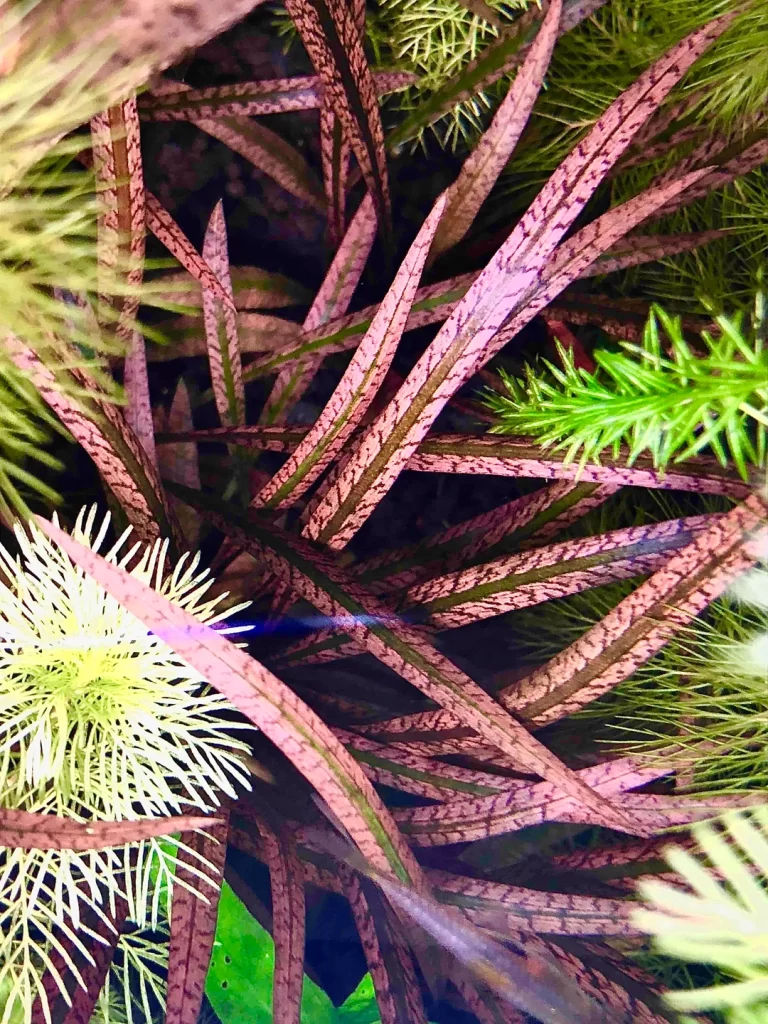
Their gentle leaves which can grow to lengths of up to 18 inches, make great a environment for smaller species of fish and shrimp. Their long foliage helps your transform your tank into an ideal tropical stream ecosystem and helps smaller tank mates feel at home.
Finally, the other overlooked benefit of growing cryptocoryne is it’s powerful oxygenation properties. Since these plants can grow large and their some crypts bear massive foliage, they can increase the oxygen contents in your water rapidly. A high-oxygen environment is a healthy one for your fish and aquatic animals to survive.
Water Parameters and Tank Requirements
To get the most out of your Cryptocoryne tank inhabitants, providing the right water parameters and tank requirements are crucial. When you meet your crypt’s needs, it will flourish in your aquascape and provide you with it’s plenitude of benefits.
Water Parameters
- Temperature: The ideal range for these tropical wonders is between 18°C – 26°C
- pH Level: Due to their proclivity of growing in limestone streams, crypts prefer slightly acidic water at around pH: 6.8 – 7.2
- Hardness: Some crypt growers report steady growth at 3 dGH – 10 dGH (General Hardness). However, they have been reported to grow well in all water hardness levels.
- Lighting: These plants are versatile growing in both high or low light environments. Please note high light environments will keep it growing the fastest.
Tank Requirements
- Tank Size: Cryptocoryne is suitable for tank sizes from nano sized to larger setups. The minimum size for this species is 5 gallons as they can grow quite large.
- Substrate: Cryptocoryne thrives best when planted in an enriched substrate. Consider using substrates like ADA Amazonia aqua soil, Caribsea Eco-Complete Aquasoil, Seachem Flourite Black Sand, or similar options.
- Placement: When positioning Cryptocoryne in your tank, avoid placing them too close to taller plants that might shade them and prevent adequate light penetration.
- Spacing: Allow 1 – 2 inches of spacing between individual Cryptocoryne plants to help them grow and spread. Plant them at different times to create a visually appealing layout as they fill in over time.
- Fertilization: Cryptocoryne benefits from regular fertilization. Consider using a liquid fertilizer like Easy Green plant fertilizer, rich in iron and potassium, to support healthy growth and prevent issues like chlorosis and leaf damage.
- CO2 Supplementation: CO2 injection is not necessary for Cryptocoryne but can help it grow faster.
- Maintenance: Cryptocoryne low-maintenance but may require some pruning to remove dead or damaged leaves. Regularly monitor its growth and overall health to ensure it thrives in your aquarium.
- Aquascaping: The best way to incorporate Cryptocoryne into your aquascape design is as foreground or midground plants.
Additional Tips:
- Stable Water Parameters: Cryptocoryne plants are sensitive to fluctuations in water conditions. To ensure their health and growth, keep stable water parameters, including temperature, pH, and hardness. Avoid sudden changes in these parameters, as they can stress the plants and lead to issues like the dreaded crypt melt.
- Proper Planting Depth: When planting Cryptocoryne, make sure to bury their root systems in the substrate 1 inch (2.5cm) deep. Planting too deeply or too shallow can affect their growth. Generally, bury the roots gently in the substrate, leaving the crown of the plant (where the roots meet the stem) slightly above the substrate surface. This will help prevent the plants from rotting or becoming uprooted.
- Prune and Propagate Carefully: Cryptocoryne plants tend to produce runners and form dense clusters over time. While this is desirable for creating lush underwater landscapes, it’s essential to prune and propagate them with care. Ensure that each propagated portion has both roots and leaves to encourage healthy growth when replanted.
Where to Buy
Below are a few of the reputable retailers of these common crypts that I use myself when decorating my aquascapes.
C. Spiralis
C. Walkeri
C. Lutea
C. Wedntii
How to Plant Cryptocoryne
- Prepare the Plant: Rinse the Cryptocoryne under fresh running water to remove any debris or potential contaminants. Using aquarium scissors, carefully trim away any damaged or rotting leaves and roots.
- Prepare the Substrate: Crypts perform best in a nutrient-rich substrate, so ensure your aquarium’s substrate is suitable for planting. If the substrate is overly compacted, loosen it slightly to facilitate easier planting and root growth. Cryptocorynes benefit from root tabs, which should be placed in the substrate near the planting site for added nutrients.
- Planting: Create a small hole in the substrate, either with your aquarium tweezers or your fingers. Gently place the Cryptocoryne in this hole, making sure the roots are fully under the substrate. Avoid burying the crown (the part of the plant where the leaves and roots meet) too deeply, as this can cause the plant to rot. The crown should be just above the substrate level.
- Filling & Positioning: Carefully fill the hole with the surrounding substrate to stabilize the plant. Choose a position in the aquarium that aligns with the specific Cryptocoryne species’ growth habits and size. For instance, Cryptocoryne parva is more suited for the foreground, while species like Cryptocoryne balansae are better for the back of your tank.
- Watering & Initial Care: After planting watch the plant closely for any signs of stress, especially for crypt melt” – a common phenomenon where crypts lose their leaves when introduced to a new environment. Remove any dead or decaying leaves as they could rot.
- Lighting & Nutrients: Cryptocoryne requires moderate lighting, typically around 8-10 hours per day.
- Spacing: When planting multiple Cryptocoryne plants, ensure there is adequate space between them to allow for their spreading growth habit. The spacing can vary based on the species but generally should be around 5-8 inches apart.
Cryptocoryne Maintenance and Care
Below are a few maintenance and care tips to guarantee your cryptocoryne stays away from the aquarium crypt keeper.
- Pruning: A little pruning on your Cryptocoryne is essential to manage their size and shape. Use sharp scissors to trim older or dying leaves, encouraging fresh growth and maintaining the plant’s health.
- Algae Control: Algae can pose a threat by competing with crypts for nutrients and light. Manually remove algae from leaves when necessary. Use algicides judiciously, following manufacturer guidelines. If all else fails, algae-consuming shrimp or snails can be beneficial.
- Root Care: Regularly inspect the roots of your Cryptocoryne for signs of rot or disease.
- Disease Prevention: Keep an eye out for diseases or pest infestations on your crypts. Quarantining new plants before adding them to your aquarium is critical to prevent the spread of diseases and pests.
- Nutrient Balance: Maintaining a balanced level of nutrients is vital for the well-being of Cryptocoryne. Watch the plants for signs of nutrient deficiencies, such as yellowing leaves or stunted growth, and adjust fertilization as needed.
- Adjusting Water Flow and Filtration: Cryptocoryne plants typically prefer low to moderate water flow. Ensure your filtration system provides adequate water movement without being too harsh
- Monitoring Water Conditions: Regular testing of water parameters is crucial. Keep an eye on values like ammonia, nitrites, nitrates, pH, and hardness. Stable water conditions are key to preventing crypt melt.
- Adapting to Crypt Melting: Your Cryptocoryne may undergo a melting process when introduced to a new environment. Be patient as they adapt, and trim off dead or melting leaves to encourage new growth.
- Temperature and Lighting: Ensure the water temperature remains within the 68 to 82°F range and provide moderate lighting to mimic their natural habitat conditions.
Cryptocoryne Propagation
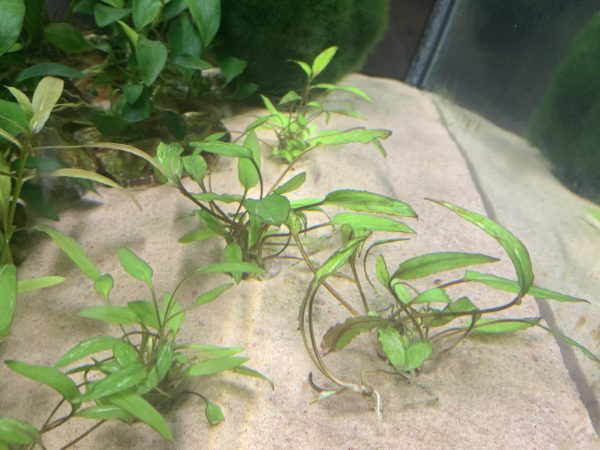
By following these steps, you can propagate Cryptocoryne in your aquarium, gradually increasing the beauty and complexity of your underwater landscape. Remember that patience and careful observation are key to successful propagation.
Propagation by Runners:
- Observation: Watch for the appearance of runners. Cryptocoryne species often propagate through runners – long, slender stems that extend horizontally across the substrate, developing small plants (plantlets) at intervals.
- Development: Allow these plantlets to grow while still attached to the runner. They will develop their own roots and leaves, gaining strength and size over time.
- Separation: When the plantlets have grown a robust root system and several leaves (usually when they reach about 2-4 inches in height), it’s time to separate them. Use sharp scissors for a clean cut, detaching them from the runner.
- Planting: Plant these new Cryptocoryne plantlets in the substrate, making sure the roots are adequately covered. The crown of the plant should be just above the substrate level. Ensure they have sufficient light and nutrients to establish themselves in their new environment.
Propagation by Splitting:
- Observation: In some cases with larger and more established Cryptocoryne plants, you can propagate them by splitting the plant at the base.
- Development: Carefully remove the parent plant from the substrate and divide it into smaller sections, each with a portion of the root system and leaves.
- Planting: Replant these sections in the substrate, ensuring proper root coverage and crown placement.
Aftercare:
- Monitoring: After planting, keep a close eye on the new crypts for signs of stress or shock. This is a critical period as they adapt to their new environment.
- Nutrients and Light: Provide adequate nutrients and lighting. This is crucial for the successful establishment and growth of the new plants.
- Pruning: Regularly trim your new Cryptocoryne plants to maintain their size and shape. Promptly remove any yellowing or damaged leaves to encourage healthy growth.
Aquarium Mates and Compatibility
The Cryptocoryne species have many friends in the aquarium industry. Here we will look at which are friend and which are foe to your crypt collection.
Ideal Cryptocoryne Tank Mates:
- Betta Fish
- Gouramis
- Loaches
- Tetras
- Guppies
Non-Compatible Cryptocoryne Tank Mates:
- Large Cichlids
- Oscars
Conclusion
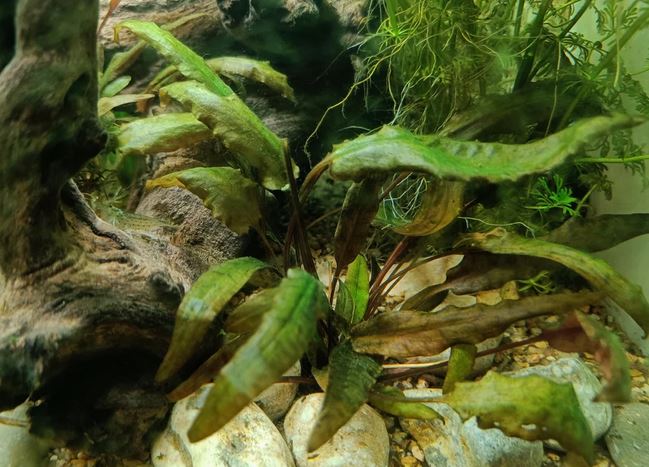
Cryptocoryne , originating from the lush aquatic streams of Sri Lanka, has become a favorite choice among aquarists worldwide. This plant’s versatility and low-maintenance make it an ideal addition to your tank. One of the standout characteristics of this plant is its ability to prosper in both soft and hard water conditions and in high and low lighting tank setups, offering flexibility for aquarists.
While Cryptocoryne is known for its slow growth rate, this gives you a steady and gradual time window to develop the aquatic landscape. For optimal growth within an aquarium, regular fertilization is recommended to ensure the plant receives the needed nutrients. However, unlike some aquatic plants, Cryptocoryne does not require CO₂ injections, making it an easier option for hobbyists or hands-off aquarists. This ease of care, coupled with its aesthetic appeal and adaptability, is why Cryptocoryne Wendtii remains a favorite plant in the aquascaping community.
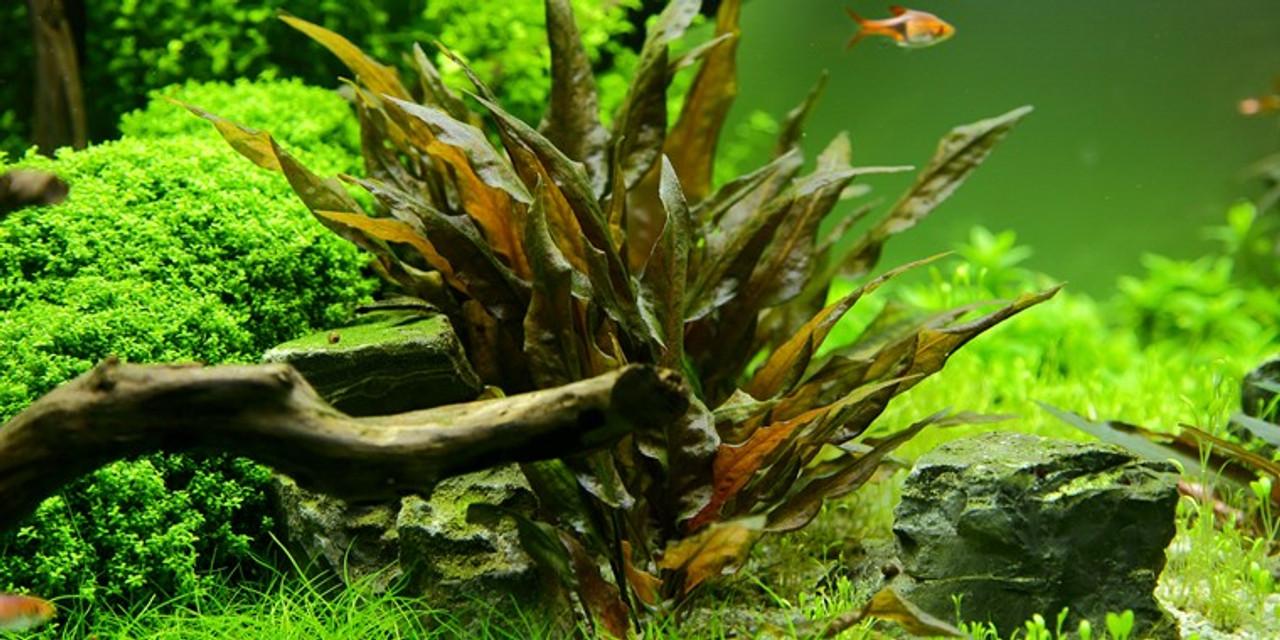
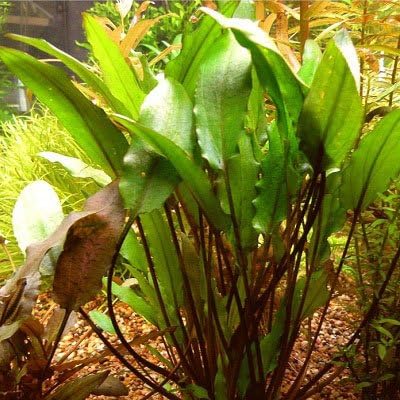
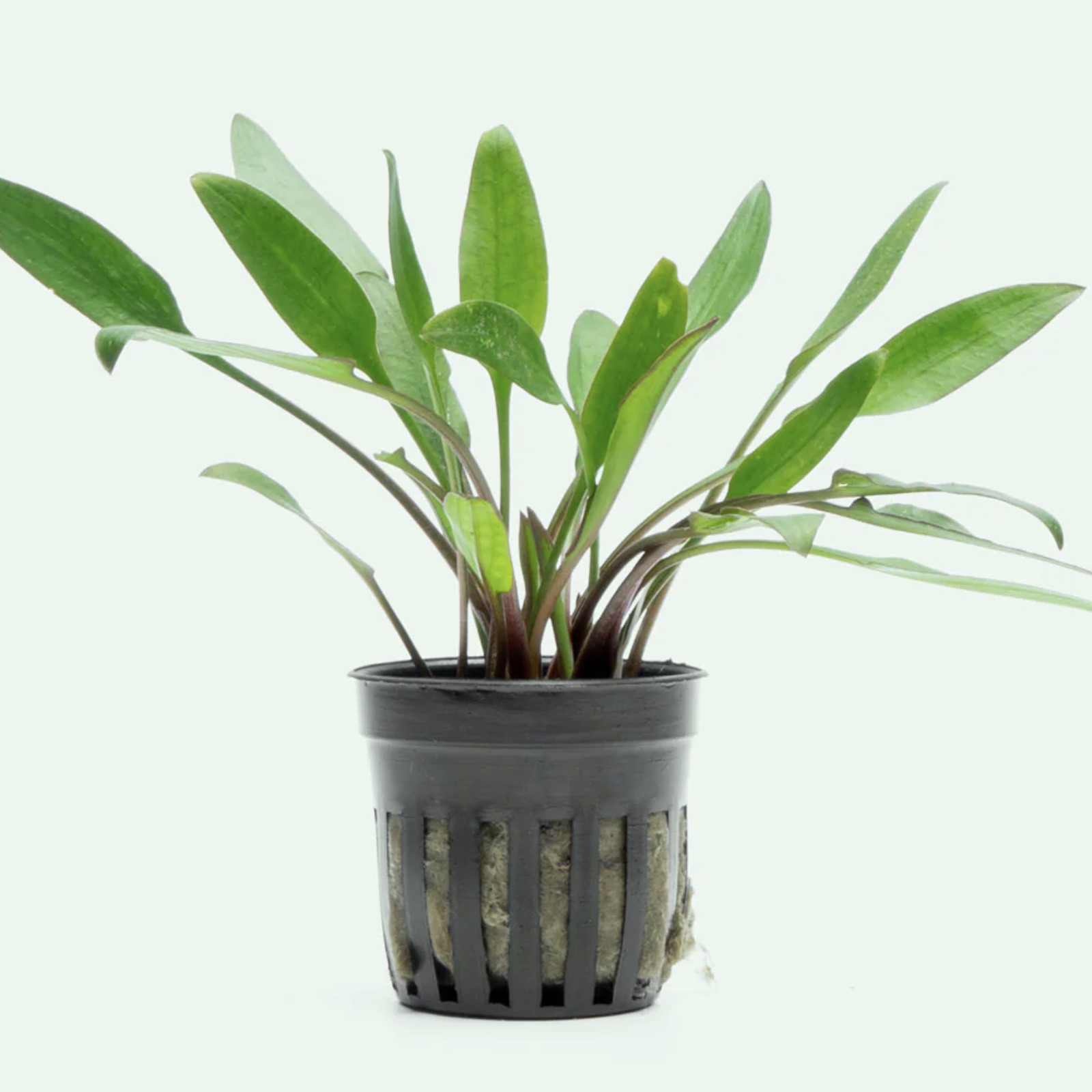
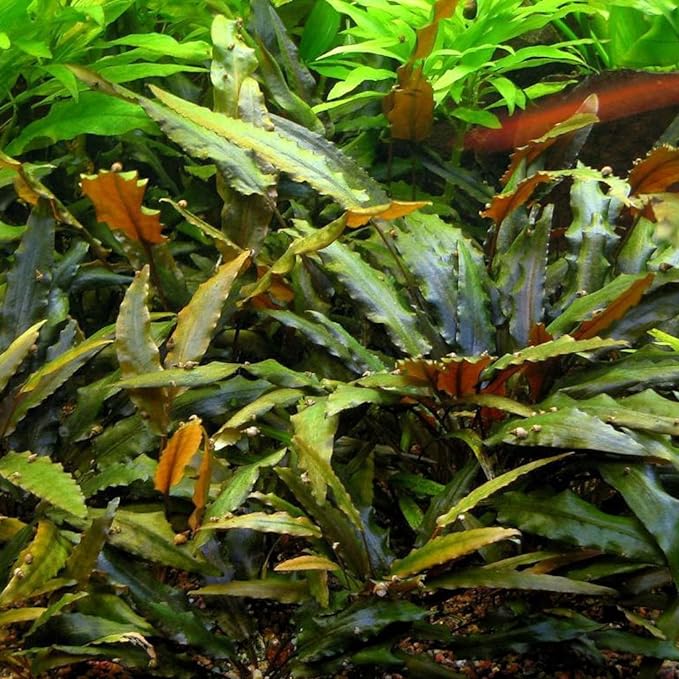
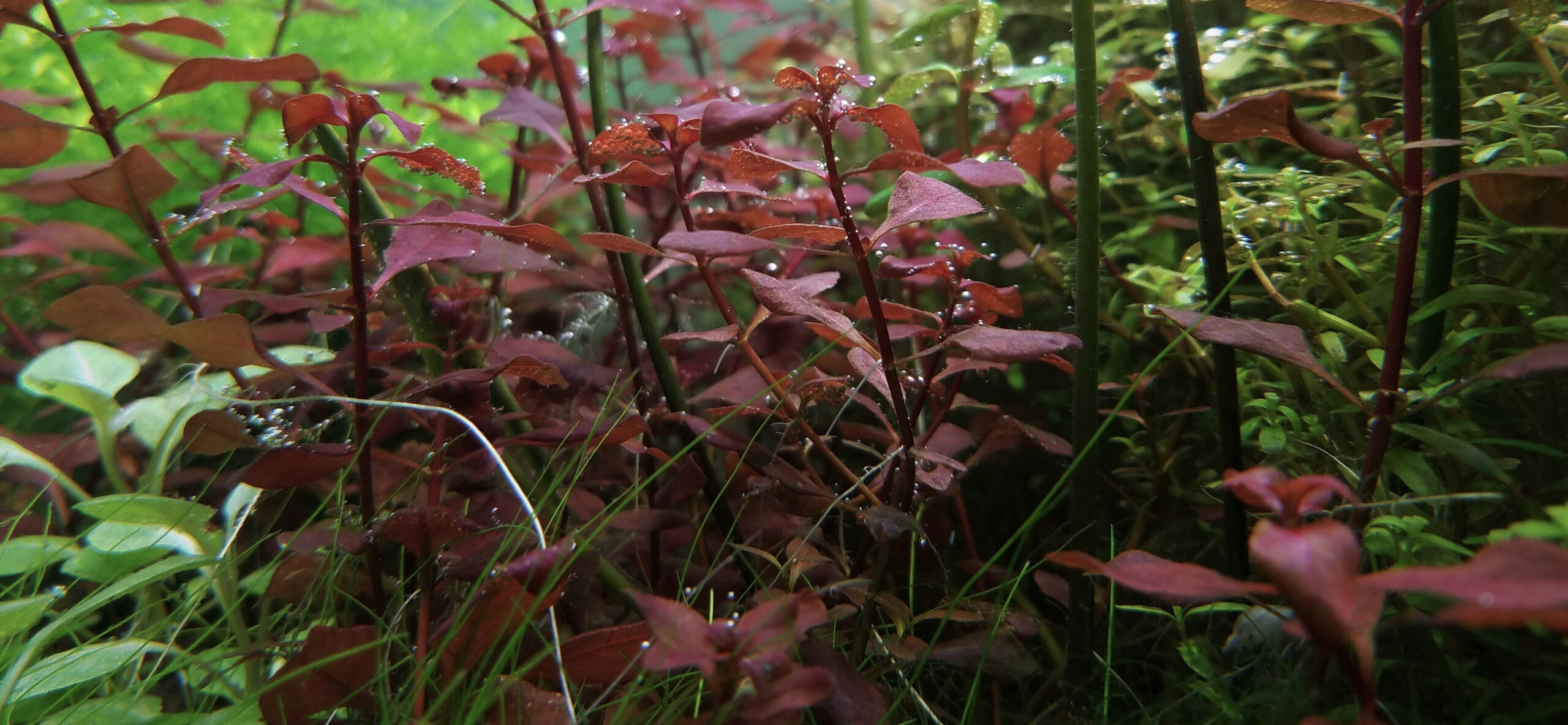
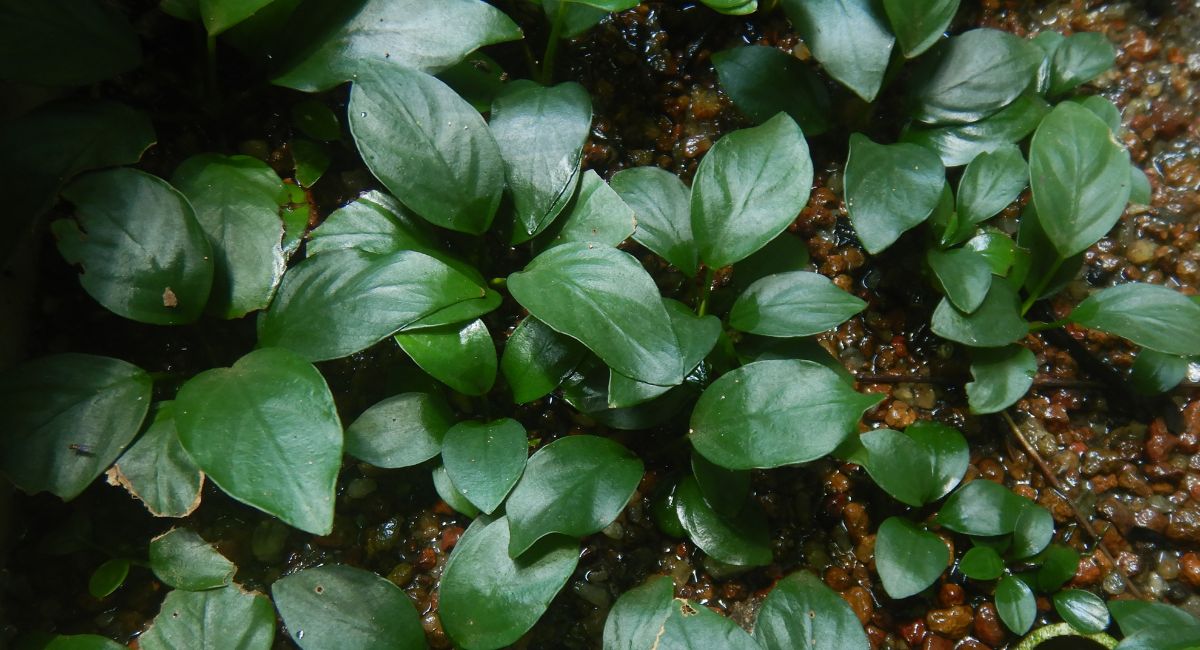


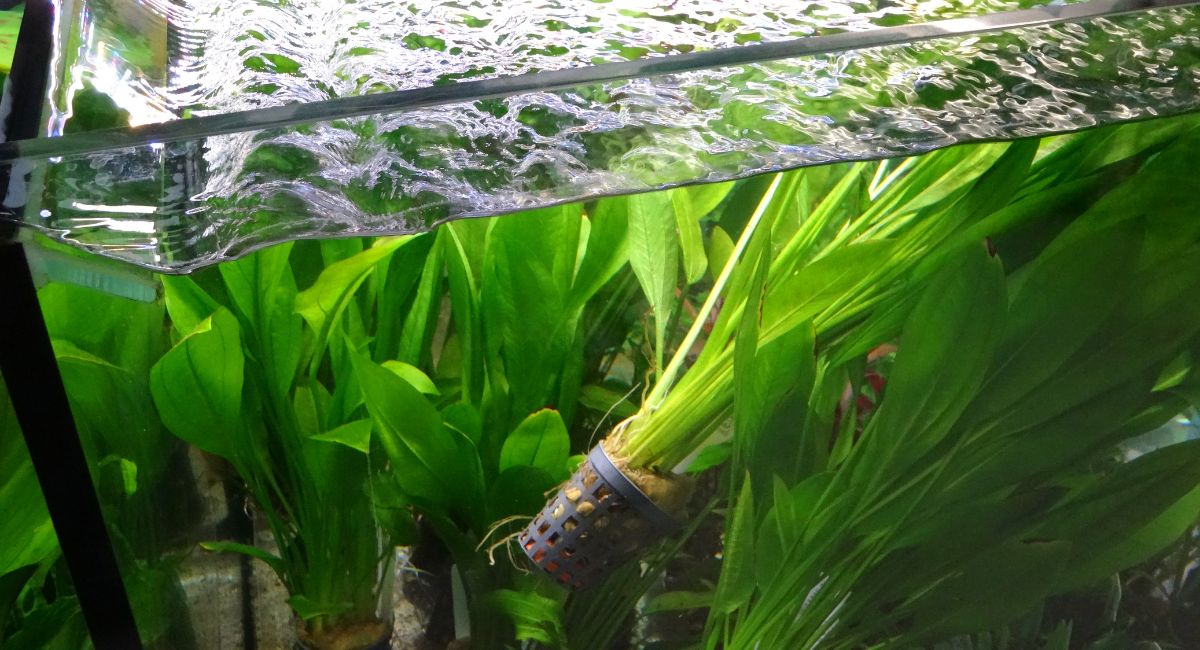
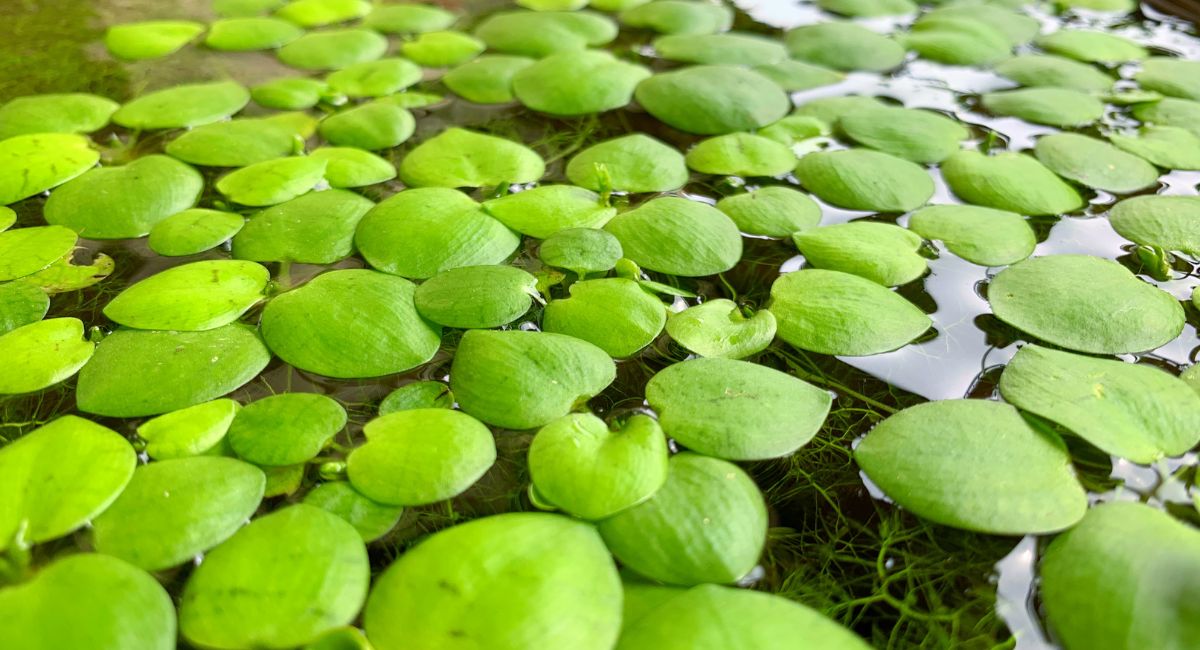
Probably the best article I’ve read to date on this aquarium plant. Thank you.